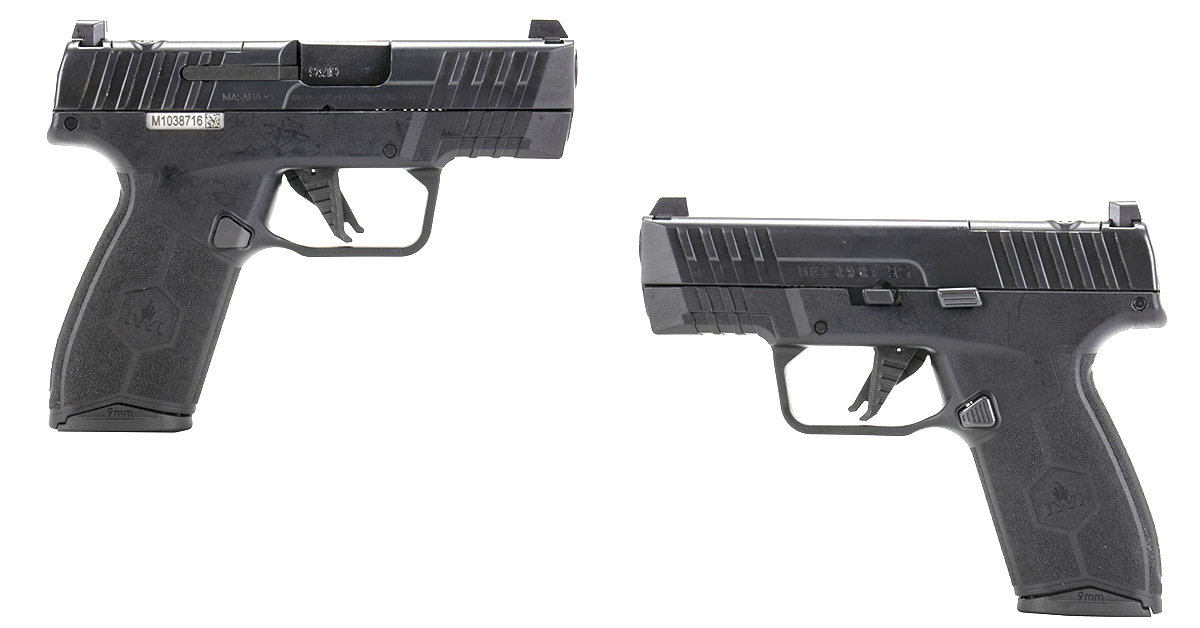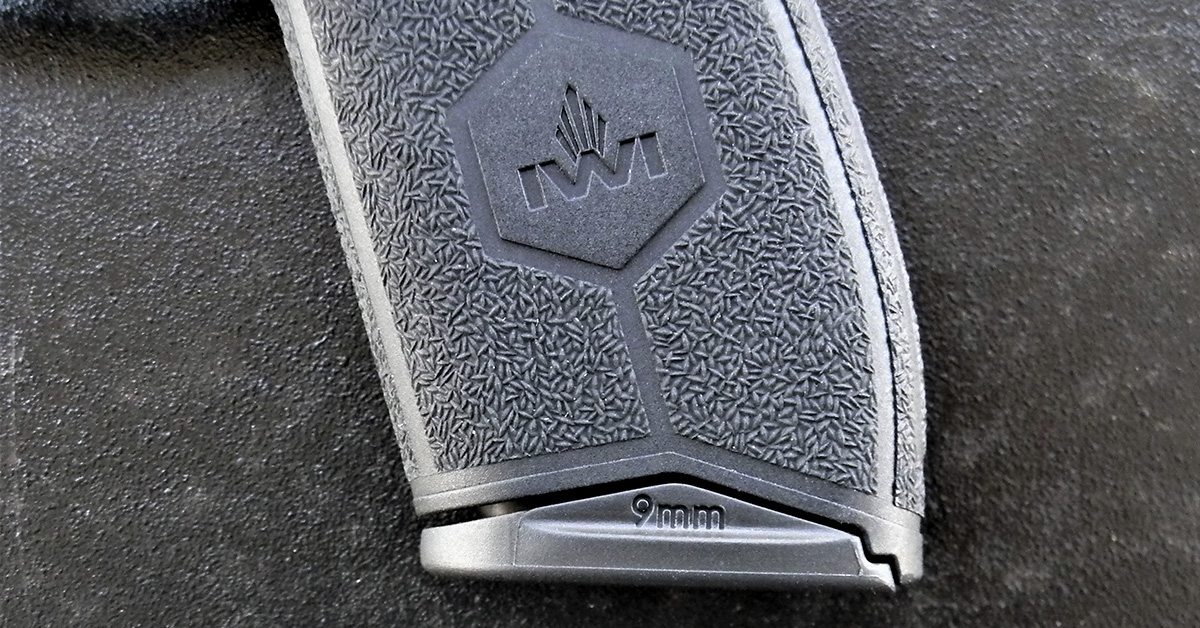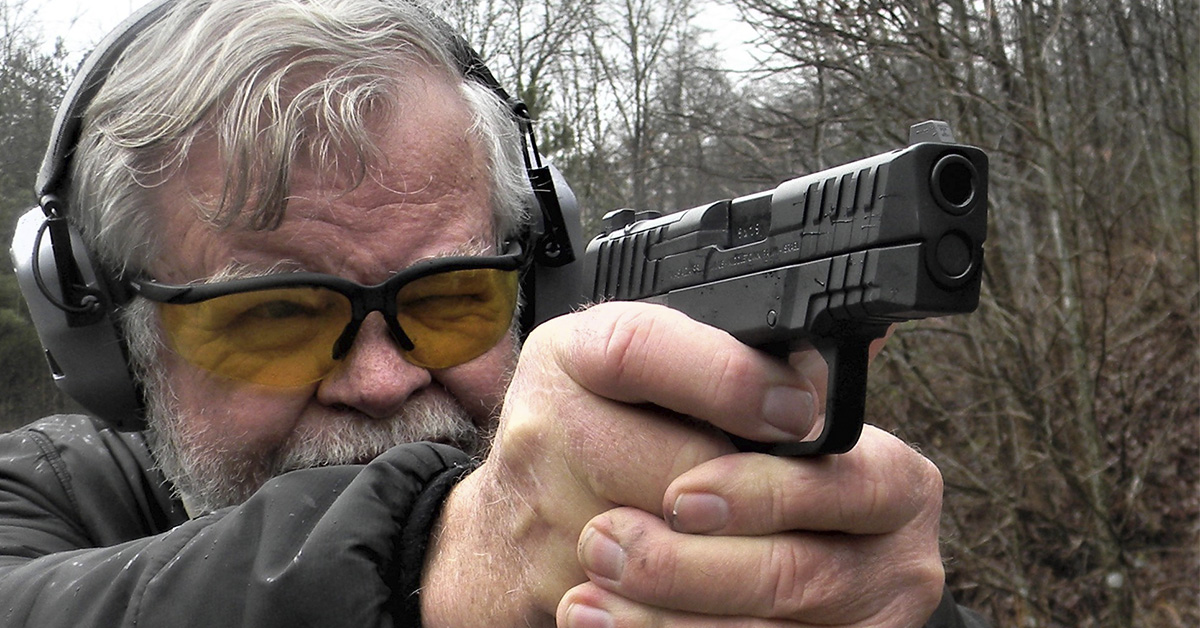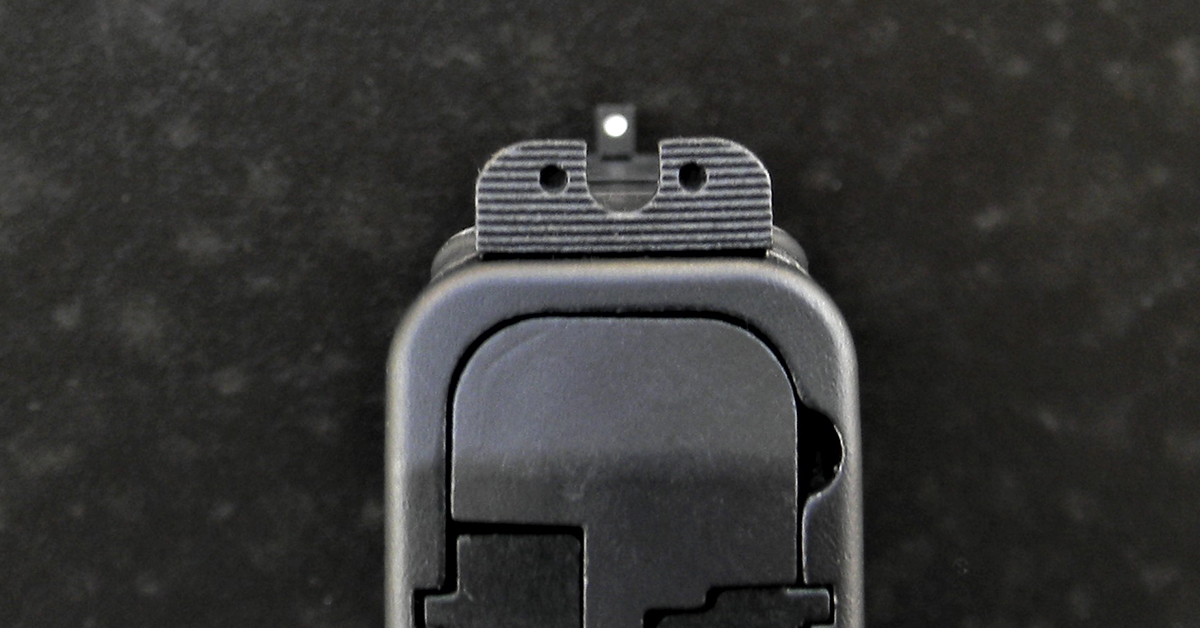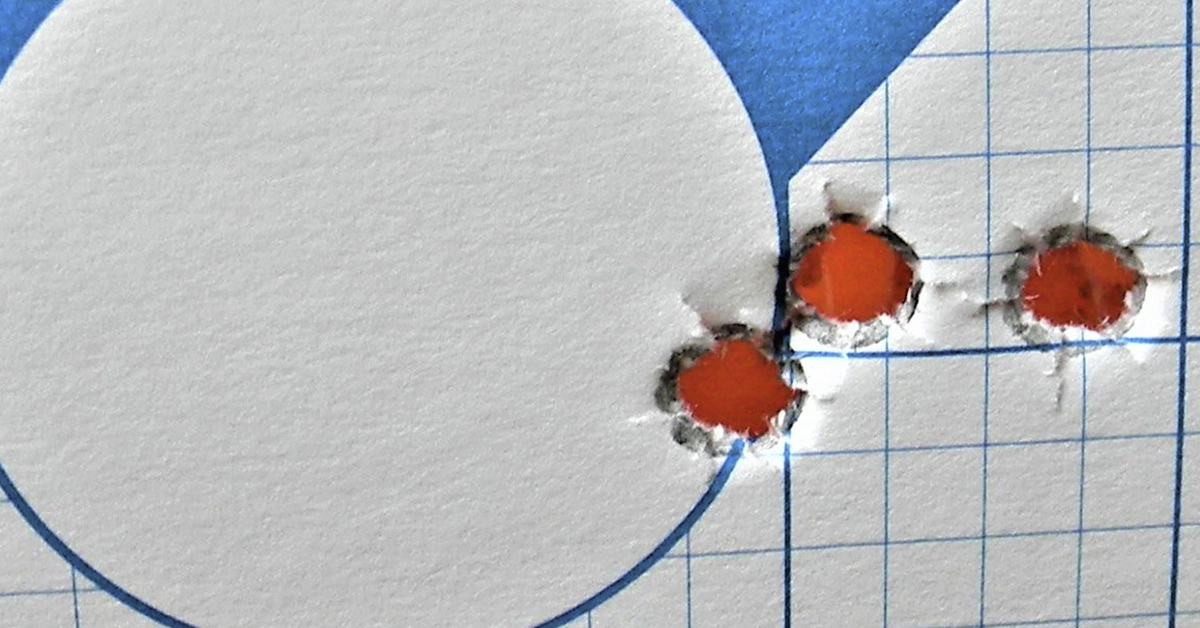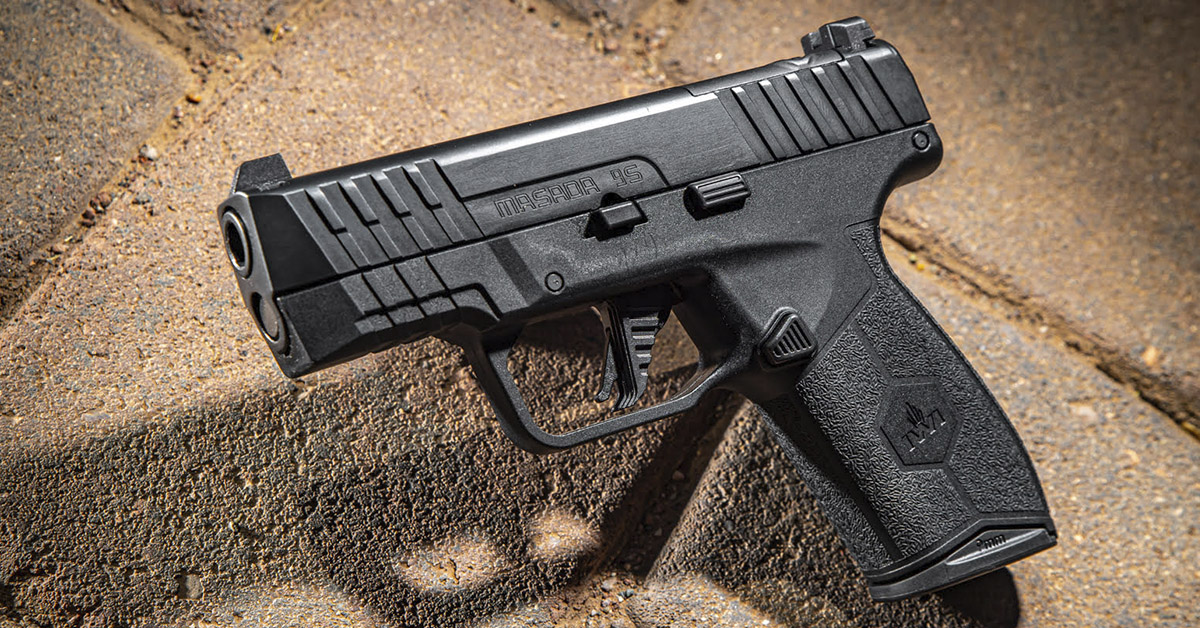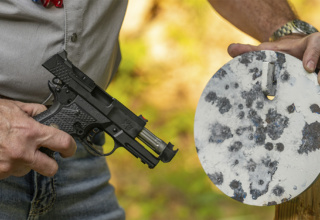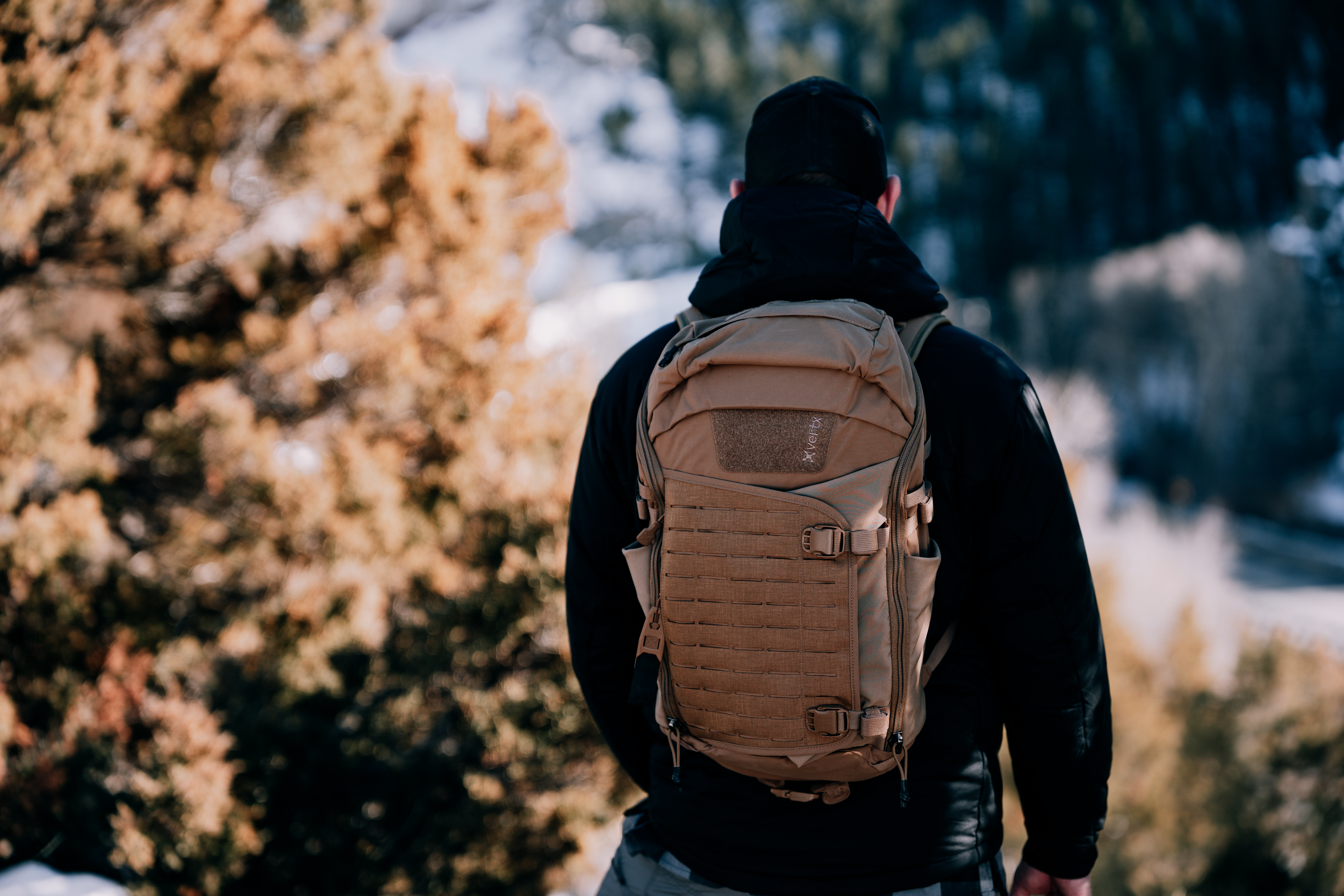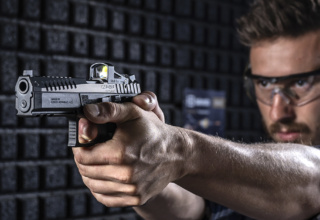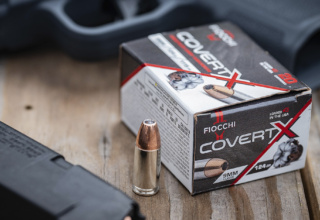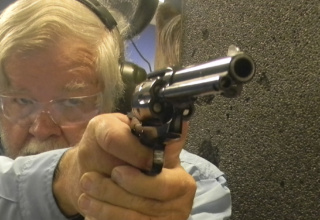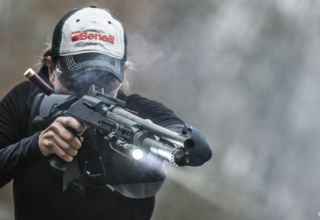Israeli Weapons Industries’ trimmed-down 9mm delivers top-shelf performance in an EDC package
by Bob Campbell
When it comes to “been there done that” in my lifetime, military experience isn’t part of that competency. My son was serving in a role that included an experience I don’t wish to have. The building he was in was struck by a missile in Israel. He managed to emerge in one piece just as fighter aircraft with the Star of David on the wings flew over his head toward the missile launchers.
Israel has been on full military alert for many years. Such danger doesn’t suffer fools or poor equipment. Israel began building their military with donated captured German gear, some Allied gear, and almost nothing new. Their nation— practically the only free country in the region — has survived against overwhelming odds. While the prowess of the Israeli Army against overwhelming odds is legendary, quite a few of the wars fought were a much closer contest than many realize. Casualties may be considerably less than their adversaries, but their own losses proportionate to the size of the country are heartbreaking.
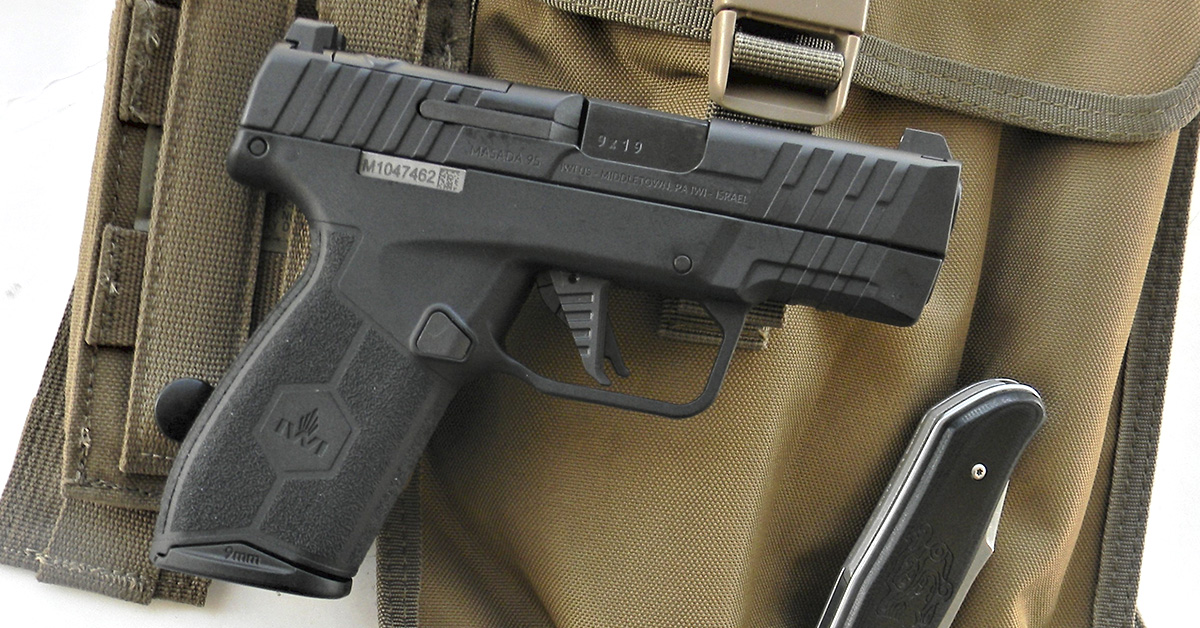
Against that backdrop, Israel has developed rugged and effective military aircraft, fighting vehicles, small arms, and some of the world’s best security measures. Often, the firearms are brilliant innovations based on existing operating principles. The AK-platform bred the Galil and the CZ 75 the Jericho. These firearms are high on big R (reliability) and little M (maintenance). Israel has used the GLOCK pistol heavily for these same reasons. In addition, Israel Military Industries and Israel Weapon Industries, IMI and IWI, have worked closely with military units in their development of defensive weapons. IWI also exports a huge number of firearms worldwide. Naturally, they could not ignore the lucrative polymer frame striker-fired market.
While some makers have cheapened the original firearm to sell at an attractive price point, IWI focuses on improving the firearm. The excellent Baby Eagle CZ type handguns, as an example, have earned a reputation at least comparable to the original CZ 75. IWI introduced the Masada 9mm pistol a few years ago. The Masada is a service-size pistol with a polymer frame and striker-fired action boasting a generous magazine capacity. The pistol has been well received. The Masada is used by some agencies in India and the Philippines, perhaps more. I tested an example after they were introduced in 2017 and found a service grade handgun with good features.
Construction of the Masada is interesting. The pistol features an easily removed internal fire control group. While similar to the SIG P320, the modular construction offers little advantage as there are no optional frame or slide assemblies offered by IWI. Neither are threaded barrels or aftermarket trigger units available.
Recently, IWI introduced the sub-compact Masada Slim. This is a well-designed pistol with good features. Maintaining the original handgun’s trigger action and features with very few changes to the design, the Masada Slim should prove to be a popular handgun. The primary difference is in the takedown. This is a serialized chassis, polymer frame, striker-fired, locked breech, and optics-ready handgun. The pistol is delivered in a lockable case with a gun lock, magazine loader, and two thirteen-round magazines. The owner’s manual is accessed by scanning and downloading via an enclosed card.
The Masada Slim seems well made of good material. The pistol’s most noticeable features include both forward and rear cocking serrations. The Masada Slim comes with well-designed combat sights, robust extractor and ejector, a generous trigger guard accommodating large hand sizes with gloves, a nicely pebbled grip frame, and undercut trigger guard.
A word on the handle treatment: abrasion is adequate and adhesion more than acceptable. This isn’t as sharp a texture as found on some pistols. The primary advantage is that while the texture offers a good firing grip, the handle isn’t likely to snag on clothing. This is clearly advantageous in this type of concealed carry firearm.
The Masada Slim features a takedown similar to Ruger’s small handguns. Clear the handgun, lock the slide to the rear. A takedown button is pressed forward and the takedown pin removed. The lip on the pin has a slight ledge. Be certain to note the orientation of the pin — perhaps even take a photo — as it only goes in one way. This isn’t my favorite-style takedown but it works well enough.
The trigger face features a blade safety set into the trigger face. Trigger compression is smooth and consistent. Measuring on both the Lyman electronic scale and RCBS pneumatic trigger gauge, trigger compression is 4.6 pounds and seldom varies more than 0.1 pounds. This is a useful trigger action that proved an aid in good accuracy potential during the test.
The frame features finger relief cuts that make for decreased trigger reach. Just don’t ride you finger on the frame when firing the pistol! The trigger is among the bright spots of the Masada Slim’s design.
The rear sight is a U-notch type. This configuration makes for real speed on the target. I like the U-notch, and while it is designed for speed, the configuration is also useful for precise fire. The front sight is a post with a single dot. The rear sight is flat, allowing jamming of the front face of the sight against a solid object to pull back the slide.
Before reviewing live-fire performance,, a comparison of the Masada Slim and Masada is in order.
The Slim has a 1.15-inch shorter length, 1.3-inch less height, is about 0.18-inch thinner, and weighs 1.8 ounce less. Small things add up to make for a more easily concealed handgun. On the other hand, weight isn’t cut by much. Recoil energy doesn’t pound you. While I don’t consider the 9mm Luger cartridge a hard kicker, control is certainly better when the handgun is at a weight over twenty ounces.
There are both large and small things I like about the Masada Slim. The pistol proved easy to fire. The magazines were easily loaded to their thirteen-round capacity. Quite a few new introductions with overstuffed magazines are difficult to load, requiring a magazine loader. Not these magazines. The pistol features a small indention in the grip frame that would allow grasping the magazine if it became stuck in the magazine well. This isn’t an unheard-of malfunction. A trapezoid magazine release button is positive in operation. The slide lock isn’t likely to be caught by accident but works as designed.
The Masada Slim is fast on target with a good natural point. You must drive the pistol a little more slowly at longer range than, say, a Glock 19 or Beretta 92 as it is lighter with a shorter sight radius. As may be expected, the Masada Slim is more comfortable to fire than a Glock 43X or Sig P365 but not quite as easily handled as the Sig P365 XMACRO. It is then in a good place in handling.
The pistol is fast on target and offers excellent practical accuracy, firing at man-sized targets at 6, 7, and 10 yards. I also fired several defense loads, including the SIG Sauer Elite 124-grain V-Crown and SIG Sauer 147-grain Elite V-Crown. The 147-grain load is among a few in this heavy weight that expands reliably and offers a good balance of expansion and penetration. I have fired a mix of bullet weights from the major makers over the past few months and found good performance in the Masada Slim, with no failures to feed, fire, or eject.
I sighted the pistol in at seven yards and nearly put all shots in the same hole from a solid benchrest. I pulled the trigger a little to one side but then adjusted my grip and trigger press and enjoyed good sight regulation. I fired several 115-, 124-, and 147-grain loads with good accuracy, finally firing five-shot groups at 50 feet for groups of 2-2.5 inches. I fired a few rounds of the Buffalo Bore Outdoorsman. This is a hard cast 147-grain bullet moving at 1,000 fps. Intended for defense against large animals, this load is long on penetration and accuracy.
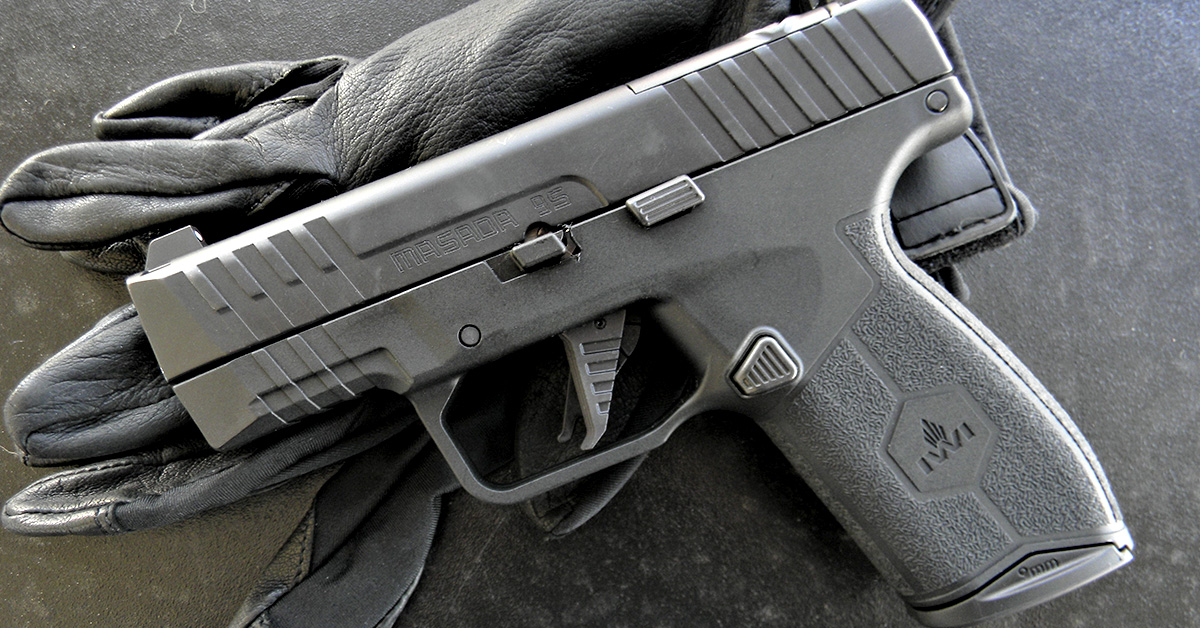
The IWI Masada Slim passed every test and turned in good overall performance. It is more versatile and useful than most pistols in its size class and makes a fine carry gun.
What We Like
- Reliability and low maintenance are each attractive. The Masada Slim is practically as accurate as the full-size Masada. The pistol’s recoil is modest, probably due to a dual recoil spring set up.
What We Don’t Like
- The single downside is a more difficult takedown than some, but nothing we can’t overcome.
Compare To
- The Masada Slim outshoots slightly smaller guns such as the Glock 43X and has more capacity. It is comparable to the Sig P365XL in every way, maybe a touch superior in overall performance. It isn’t quite as nice a shooter as the larger Sig P320. It is much nicer shooting than the Smith & Wesson Equalizer.
Masada Slim Specifications
- Caliber: 9mm Parabellum
- Action: semi-auto
- Operating System: striker-fired
- Magazine Type: IWI, steel
- Magazine Capacity: 13-round, 10-round
- Barrel Material: stainless steel
- Barrel Length: 3.4 in.
- Weight: 1.27 lbs. w/o magazine, 1.4 lbs. w/magazine
- Rifling: 1:10 RH
- Sights: 3-dot
- MSRP: $450

